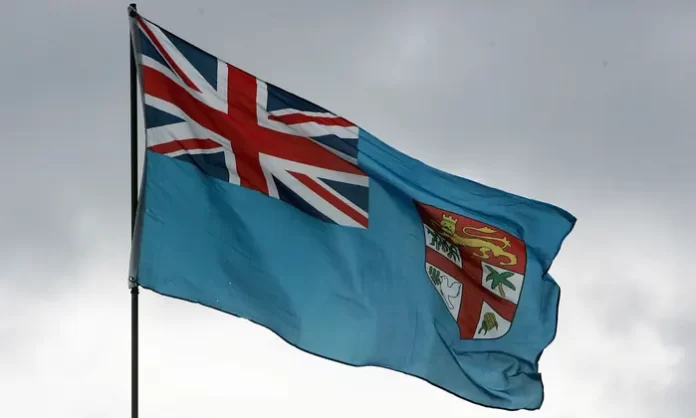Eighteen months after the onset of the pandemic, tourism, the life blood of the economy, is still at a virtual standstill, trade flows are disrupted, and business activities are curtailed. As a result, the economy is expected to contract by a further 4.1 percent in 2021. The impact on livelihoods is severe and exacerbated by the frequent severe tropical cyclones. Growth is projected to rebound in 2022 to 7.8 percent assuming that the borders will reopen by mid-2022.
Fiji is a small island nation in the South Pacific Ocean with a population of about 900,000.
Remoteness, natural hazards and climate change represent major obstacles to the country’s development.
Prior to COVID-19, tourism was the main driver of the economy and a major source of foreign exchange, contributing nearly 40 per-cent of GDP. Recent growth was under-pinned by robust tourism, rising house-hold consumption, and extensive reconstruction after Tropical Cyclone (TC) Winston in 2016, which caused damages of about 30 percent of GDP.
Fiji’s poverty rate measured against national standards of living was 29.9 percent in 2019/20, prior to the onset of COVID-19. The Government’s initial success in the fight against COVID-19 virus during the first wave of local transmission in March 2020 had largely prevented direct health impacts but the economic impact has been devastating. However, the second wave of infections since April 2021 is having a severe health impact while the lockdowns and restrictions are prolonging and deepening the economic crisis. Poverty has likely increased due to both the economic and health impacts of the past 18 months, not just for the 13 percent of people whose households depend on tourism income, but for the population overall.
The Government is planning to fully vaccinate the adult population by October 2021 and reopen the borders by November 2021. However, protracted travel restrictions and uncertain economic outlook in Australia and New Zealand, Fiji’s key tourism markets and trading partners, will slow the Fijian economy’s pace of recovery.
Natural disasters and related recovery costs have eroded fiscal space in the last five years, and undermined macroeconomic stability. The structural reform agenda includes building climate resilience and creating a more supportive environment for private-sector-led growth.
Recent developments
The COVID-19 pandemic presents Fiji with an economic crisis of unprecedented scale with an estimated contraction of 15.7 percent in 2020. International travel restrictions brought tourism to a virtual standstill. This caused a ripple effect on all segments of the economy, had a negative impact on related industries such as retail trade, transport and finance and spillover effect on consumption, finance and investment.
Strict containment measures impaired economic activity, leading to 115,000 Fijians becoming unemployed or working reduced hours. Fiji was also hit by three tropical storms since the beginning of the pandemic. The compound effect of lost livelihoods across sectors (tourism from COVID-19 and agriculture from the TCs) and asset damage from the multiple shocks exposes much of the population to increased poverty and vulnerability.
The Government has introduced a number of measures to mitigate these poverty impacts, including top-ups through existing social programs and the National Provident Fund.The shocks depleted fiscal buffers and upended short-term fiscal policy goals. Prior to the shocks, tax revenue to GDP averaged 24 percent -and the Government was implementing an expenditure-based fiscal consolidation. The shocks reversed these trends pushing the fiscal deficit to 8.5 percent of GDP in 2020. Public debt increased from 47 percent of GDP in 2019 to 64 percent in 2020. The Central Bank cut the overnight policy rate from 0.50 to 0.25 percent in the first quarter of 2020 in response to the pandemic. Inflation has been negative since October 2019 and reached a historic low of -2.8 percent at end-December 2020 on account of lower food and fuel prices and the domestic slowdown. The current account deficit widened to 13.3 percent in 2020 due to an 80 percent drop in tourism receipts de-spite narrowing trade deficit. Foreign re-serves remained stable US$2,410 million at end-August 2021, equivalent to 11.4 months of imports.
Outlook
Economic recovery hinges on reopening of international borders and renewed appetite for tourism. The economy is forecast to contract by a further 4.1 percent in 2021 on account of continued border closures particularly in Australia and New Zea-land, Fiji’s major trade partners and tour-ism markets. Growth is projected to re-bound in 2022 to 7.8 percent assuming the borders reopen in mid-2022.
The fiscal deficit is expected to widen to 13.8 percent of GDP in 2021 but to gradually decline thereafter to 4.4 percent of GDP by 2023, as the Government reverts to its fiscal consolidation strategy. The strategy combines targeted time-bound revenue and expenditure measures, and maximization of concessional financing to cover deficits. The goal is to increase tax revenue from a projected 16.2 percent of GDP in FY2022 to 24 percent by FY2023 through widening of the tax base and implementation of more effective tax collection mechanisms. Over the same period, expenditures are projected to fall from 37.3 percent of GDP in FY2022 to around 31.1 percent of GDP by FY2023 though zero-based budgeting, freezing public sector hiring and wages, and limiting capital spending to high priority projects.
The risk of debt distress has heightened with the debt-to-GDP ratio forecast to climb to 75.9 percent in 2021 reflecting borrowing to counter the impact of COVID-19 and the contraction in nominal GDP. Fiji’s debt management policies remain prudent, and the authorities are committed to borrowing primarily on concessional terms. The most recent World Bank DSA (February 2021) assessed public debt to be sustainable over the medium-term assuming fiscal consolidation measures are fully implemented, growth resumes and tourism rebounds. The current account deficit is forecast to widen to 16.1 percent of GDP in 2021 due to the prolonged border closures halting tourism but to improve steadily to 4.1 percent of GDP by 2023 as international tourism receipts rebound.
SOURCE: WORLD BANK/PACNEWS















